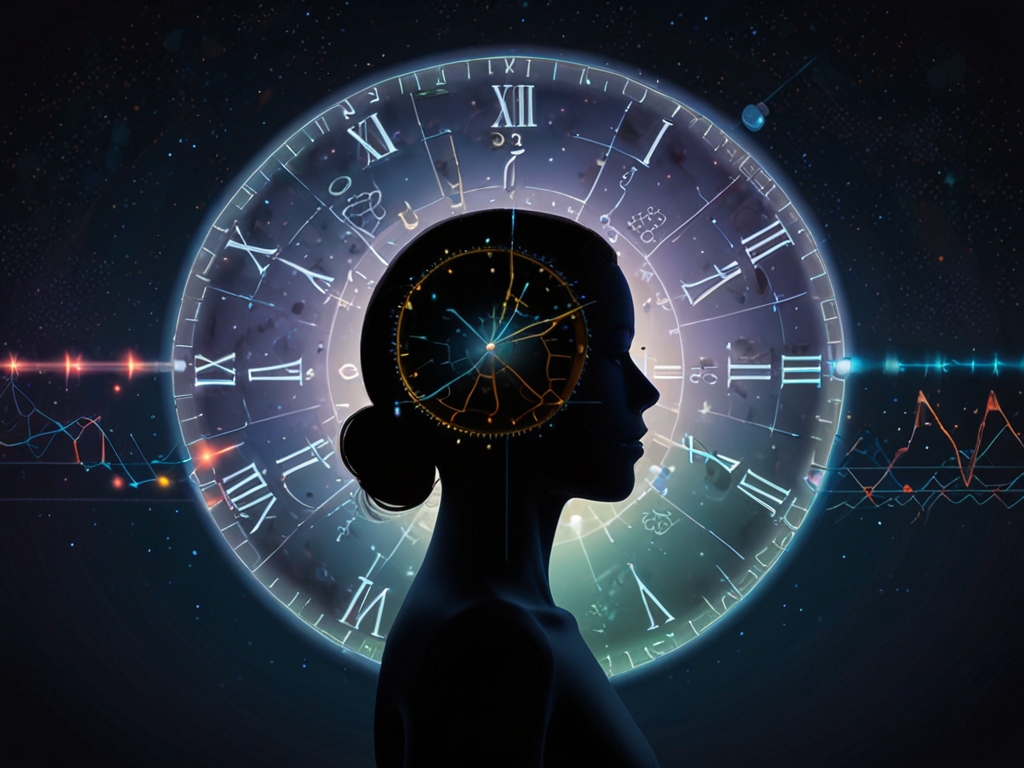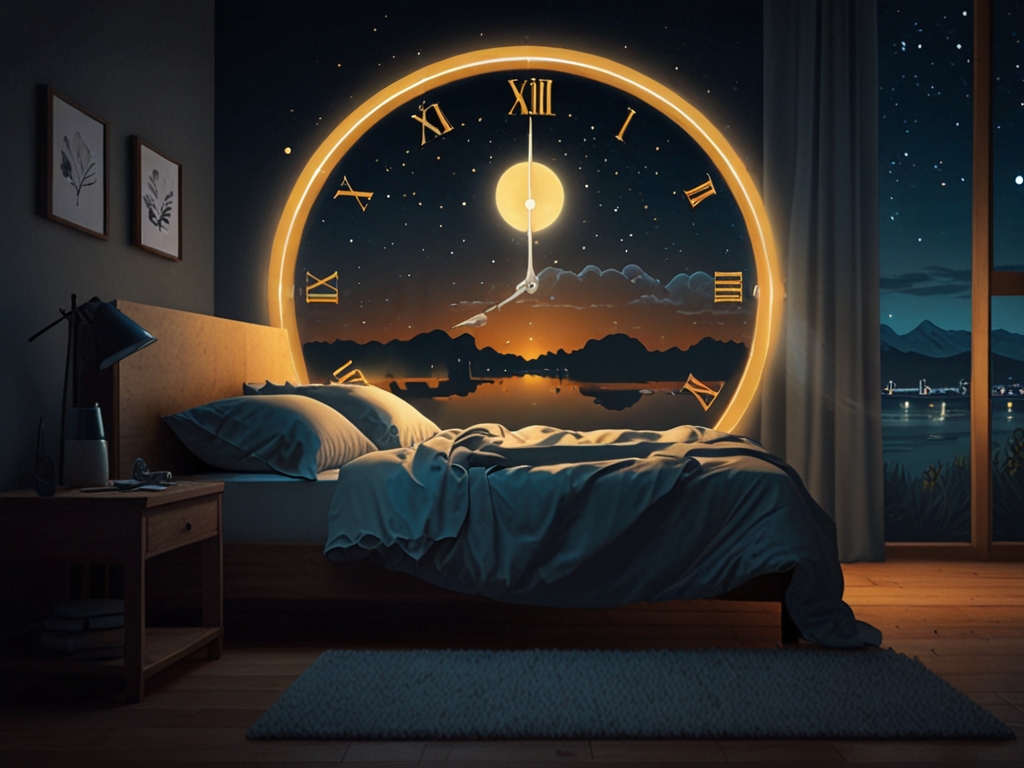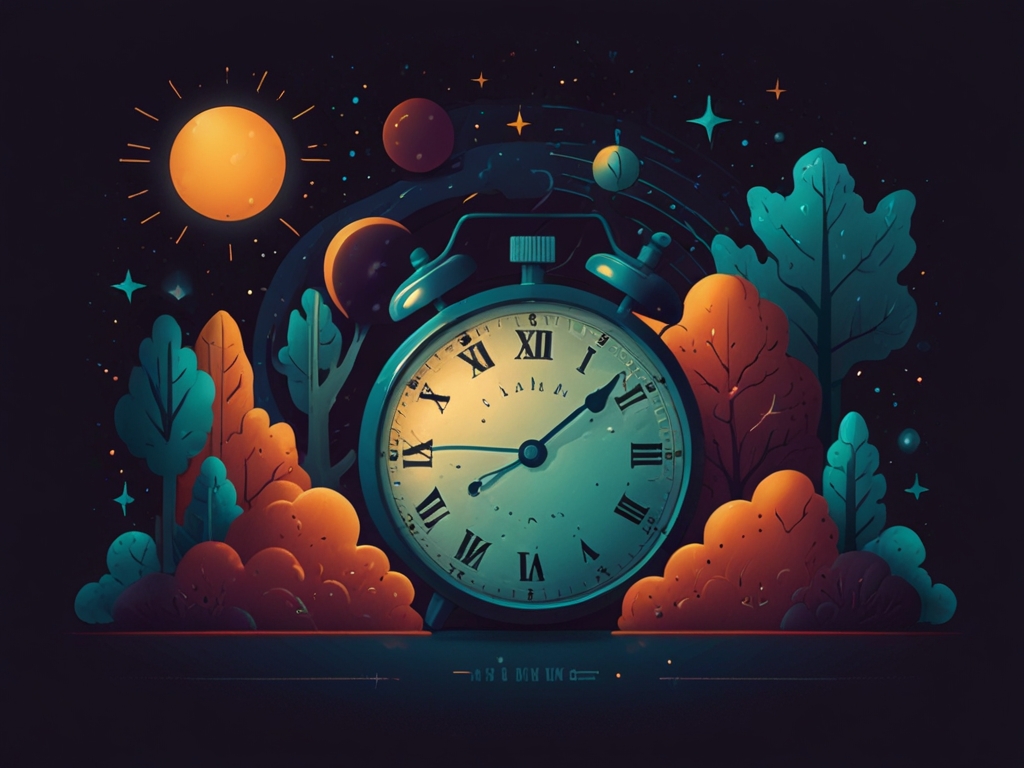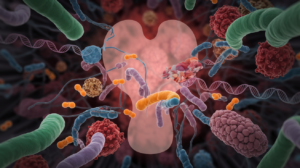Table of Contents
Introduction
Our bodies run on a biological schedule, governed by circadian rhythms, which are 24-hour cycles controlling sleep, energy, metabolism, and more. Not everyone operates on the same internal clock, and this variation, known as chronotypes, explains why some of us are morning people while others thrive at night. By understanding these natural rhythms, we can optimise health, productivity, and overall well-being.
In this blog article, we will look into the world of circadian rhythms and biological clocks, exploring how they work and how you can use this knowledge to improve your health and daily life.
What Are Circadian Rhythms?
Circadian rhythms are 24-hour cycles that are part of the body’s internal clock. These rhythms govern various physiological processes in living organisms, including humans. The term “circadian” comes from the Latin words “circa” (meaning “around”) and “diem” (meaning “day”), reflecting the fact that these rhythms roughly follow the 24-hour cycle of day and night on Earth.
How Circadian Rhythms Affect Our Body
Our circadian rhythms influence a wide range of physiological processes, including:
- Sleep-wake cycles
- Hormone production
- Cell regeneration
- Cognitive function
- Body temperature regulation
- Metabolism and digestion
- Mood and emotional state
Biological clocks and peripheral clocks both function based on circadian rhythms, but their mechanisms and roles differ in terms of centralisation and scope of control.

Biological Clocks
The body has a hierarchical system of biological clocks that govern these rhythms.
The Master Clock in Your Brain
At the heart of our circadian system is a group of neurons in the brain called the suprachiasmatic nucleus (SCN). Located in the hypothalamus, this tiny region acts as our body’s master clock, coordinating all the biological clocks in our body.
The SCN receives light signals from our eyes, which helps it sync our internal clock with the external environment. Light is detected in the eye by receptors called intrinsically photosensitive retinal ganglion cells (ipRGC) which contain the photopigment melanopsin. There is a connection called the retinohypothalamic tract that extends from the retina of the eye to the anterior hypothalamus. Within the hypothalamus sits the SCN. This is why exposure to light, especially sunlight, is so important for maintaining healthy circadian rhythms.
- Function: It acts as the central pacemaker of the body’s circadian system, coordinating the timing of physiological processes across the entire organism. This clock is primarily synchronised by external cues, particularly light, which signals through the retina to the SCN.
- Mechanism: The master clock controls the body’s overall circadian rhythms by regulating hormones like melatonin (promoting sleep) and cortisol (promoting alertness), as well as body temperature, feeding cycles, and sleep-wake cycles.
- Light Influence: The master clock resets daily based on light exposure, particularly blue light, which helps align internal rhythms with the 24-hour day-night cycle. This process, known as entrainment, ensures that the body’s internal time matches the external environment.
- Hierarchy: It provides signals to synchronise peripheral clocks in other tissues and organs to ensure overall coordination of bodily functions.
During daylight, the SCN suppresses melatonin, a hormone that induces sleep, while at night, melatonin levels rise, preparing the body for rest. Besides sleep, circadian rhythms influence hunger, hormone release, and mood.
Our circadian rhythms are primarily influenced by external cues, known as zeitgebers (German for “time givers”) such as light, temperature, and meal timing, which help synchronise our peripheral clocks with the external environment. Disruptions to these cues—such as exposure to artificial light at night—can misalign circadian rhythms, leading to health issues like insomnia, obesity, and mood disorders.
Peripheral Clocks
These peripheral clocks typically take their cues from the master clock in the SCN, but they can also be influenced by local factors such as food intake or physical activity. The intricate interplay between the master clock and these peripheral clocks ensures that our bodily functions are optimally timed and coordinated.
- Location: Peripheral clocks are distributed across tissues and organs, including the liver, heart, kidneys, lungs, and even within individual cells.
- Function: They regulate circadian rhythms locally, controlling processes specific to their organ or tissue, such as metabolism in the liver or gene expression in muscle cells. Each peripheral clock has its own autonomous cycle, but it is influenced by the master clock to maintain coordination across the body.
- Mechanism: While peripheral clocks operate on a similar feedback loop of genes and proteins like the master clock, they can respond to cues beyond light. For instance, feeding patterns and exercise are strong regulators of peripheral clocks, especially in organs like the liver and muscles.
- Synchronisation: These clocks can be synchronised by the master clock through hormonal and neuronal signals, but they can also run independently for some time if disconnected from the central control. However, without regular input from the SCN, they may drift out of sync with one another and the environment.
Key Differences:
• Master clock (SCN): Central, light-driven, orchestrates the entire circadian system.
• Peripheral clocks: Decentralised, respond to specific stimuli (like food or activity), regulate local processes, and can drift without input from the master clock.
Clock Genes: How They Keep Your Body on Time
Clock genes are at the heart of our body’s biological clock, regulating our daily rhythms or circadian rhythms. These genes create a 24-hour cycle that controls key functions like sleep, digestion, and hormone release.
Clock genes produce proteins that rise and fall throughout the day in a feedback loop. When protein levels get high, production stops, and when they drop, it restarts, repeating every 24 hours to keep our internal clock synced to the day-night cycle.
Key proteins include CLOCK and BMAL1, which start the cycle, and PER and CRY, which build up during the day and then stop production. REV-ERB and ROR help fine-tune this process. These proteins regulate hormones like melatonin for sleep and cortisol for energy, and influence metabolism.
Light and temperature also impact clock genes, helping us stay in sync with our environment. However, disruptions like shift work or jet lag can throw off the rhythm, leading to sleep problems. Understanding these processes highlights the importance of healthy routines for our body’s natural timing.
Chronotypes: Are You a Night Owl or an Early Bird?
Chronotypes: The Different Internal Timers
Not all people follow the same internal clock. Chronotypes refer to the natural variations in circadian rhythms that determine when individuals feel most alert or sleepy. You have likely heard of “morning larks” and “night owls,” but in reality, there is a spectrum of chronotypes that exist between these extremes.
Understanding the Different Chronotypes
Chronotypes describe individual differences in the timing of sleep, peak performance, and activity levels throughout the day. People fall into three broad categories:
- Morning types (Larks): These individuals wake up early, feel most alert in the morning, and tend to go to bed earlier. They are often at their cognitive and physical peak in the early part of the day.
- Evening types (Owls): Night owls feel more energetic and alert in the evening or late at night, preferring to stay up late and sleep in.
- Intermediate types: Many people fall somewhere in between, showing flexibility in their sleep-wake patterns and energy levels throughout the day.
Chronotype Determinants: Genes, Age, and Environment
Chronotype is largely determined by genetics. Specific variations in clock genes influence whether someone is more likely to be a morning person or an evening person. However, chronotypes can also shift with age. For instance, teenagers tend to have a delayed sleep phase, making them more night-oriented, while older adults often revert to earlier sleep and wake times.
Environmental factors, such as exposure to artificial light, work schedules, and lifestyle choices, can also impact an individual’s chronotype. People living in modern urban settings, with exposure to artificial lighting late into the evening, may find their natural circadian rhythm pushed back, making them more night-owl-like.
Chronotypes Across the Lifespan
Chronotypes change as we age. Children typically lean toward an earlier schedule, but as they enter adolescence, they experience a shift toward eveningness, often staying up late and waking up late. This delayed phase persists into early adulthood but gradually shifts back toward morningness as people age, particularly in their 50s and 60s.
Understanding your chronotype can help you optimise your daily schedule to align with your natural rhythms, potentially improving your productivity and well-being.
The Importance of Aligning Daily Routines with Chronotypes
Understanding your chronotype is not just a matter of curiosity—it can have significant implications for your health, productivity, and overall well-being. Aligning your work schedule and lifestyle with your natural biological rhythms can lead to improved performance, better sleep, and enhanced health outcomes.
Maximising Productivity Based on Chronotype
One of the biggest benefits of identifying your chronotype is optimising your work and personal life. Morning people may find they are most productive in the early hours and should prioritise complex tasks or creative work during this time. In contrast, night owls might benefit from scheduling demanding tasks later in the day, when their energy and focus are at their peak.
By understanding your body’s natural rhythm, you can tailor your daily routine to make the most of your peak periods of alertness. This can lead to better time management, greater focus, and improved work outcomes.
Health Benefits of Chronotype Alignment
Aligning your sleep schedule with your chronotype can improve sleep quality, reduce stress, and lower the risk of chronic diseases. People who are forced to operate against their natural rhythm—for example, night owls who must wake up early for work—are at greater risk for sleep deprivation, anxiety, and metabolic problems.
Social jet lag, the discrepancy between an individual’s biological clock and societal demands, is a common issue. It often occurs when work or school schedules require people to wake up at times that are not aligned with their natural sleep patterns. This misalignment can have long-term negative effects on health, including an increased risk of obesity, diabetes, and cardiovascular disease.
Chronotypes and Modern Society: Challenges and Adaptations
Modern society, with its artificial lighting, 24/7 work cycles, and technology, poses significant challenges to our circadian rhythms and chronotypes. The constant exposure to blue light from screens, for instance, can delay melatonin production and interfere with sleep, particularly for evening chronotypes.
The Impact of Circadian Rhythms on Health
Our circadian rhythms have an impact on our overall health and well-being. When these rhythms are disrupted, it can lead to:
● Cardio-Metabolic Disorders: Circadian misalignment increases the risk of obesity, type 2 diabetes, hyperlipidemia, and cardiovascular disease. Disruptions in metabolic processes, such as glucose metabolism and lipid regulation, are key contributors to these conditions.
● Digestive Issues: Circadian disruption can impact the gut microbiome, altering the composition and function of the microorganisms that play a vital role in digestion and overall health. Eating late at night can disrupt circadian rhythms, leading to metabolic issues such as impaired glucose tolerance and increased risk for obesity, diabetes, and cardiovascular disease. By confining eating to the daytime, time-restricted eating (TRE) aligns energy intake with the body’s peak metabolic activity, improving overall health outcomes.
● Immune Dysfunction: The immune system also operates on a circadian rhythm, and disruptions can lead to increased inflammation and susceptibility to infections. The timing of immune responses and the efficacy of vaccinations can be influenced by circadian rhythms, highlighting the importance of considering time-of-day variations in immune function.
● Neuropsychiatric Disorders: Mood disorders, such as depression and anxiety, and seasonal affective disorder (SAD) as well as sleep disorders, are closely linked to circadian rhythm disruptions. The SCN’s role in regulating sleep-wake cycles and the impact of melatonin on mood regulation underscore this connection.
● Cancer Development: Emerging evidence suggests that circadian disruption can increase the risk of certain cancers. The influence of circadian rhythms on cell cycle regulation, DNA repair, and immune function, all play roles in cancer development and progression.

Sleep Disorders and Circadian Rhythm Disruptions
Many sleep disorders are closely linked to disruptions in circadian rhythms. Common examples include:
•Insomnia: Difficulty falling asleep or staying asleep.
•Delayed Sleep Phase Syndrome: A condition where sleep is delayed by two or more hours past the usual bedtime, making it hard to wake up in the morning.
•Advanced Sleep Phase Syndrome: The reverse of delayed sleep phase syndrome, where individuals feel sleepy and wake up much earlier than they would like.
•Shift Work Sleep Disorder: Sleep difficulties experienced by people who work non-traditional or rotating hours.
Understanding the role of circadian rhythms in these disorders can help in developing effective treatment strategies.
Optimising Your Circadian Rhythms for Better Health and Productivity
Now that we understand the importance of circadian rhythms, how can we use this knowledge to improve our daily lives? Here are some strategies:
Establish a Consistent Sleep Schedule
One of the most effective ways to maintain healthy circadian rhythms is to go to bed and wake up at the same time every day, even on weekends. This helps reinforce your body’s natural sleep-wake cycle.
Manage Light Exposure
Since light is the most powerful zeitgeber, managing your exposure to it can significantly impact your circadian rhythms:
- Get plenty of natural light during the day, especially in the morning. For most people, 20-30 minutes of bright natural light in the morning (around 10,000 lux) is ideal to benefit from its effects on circadian rhythm, mood, and alertness. If using artificial light, a light therapy lamp that emits 10,000 lux can offer similar benefits. The timing of light exposure is critical, with morning light promoting healthy circadian rhythms and too much evening light disrupting sleep.
- Avoid bright lights in the evening, particularly blue light from electronic devices
- Use blackout curtains or an eye mask to create a dark sleeping environment
Time Your Meals
Eating patterns can influence your circadian rhythms. Try to:
- Eat meals at consistent times each day
- Avoid large meals close to bedtime
- Consider TRE (limiting your eating to a specific window each day)
Exercise at the Right Time
Regular exercise can help reinforce your circadian rhythms, but timing matters:
- For most people, exercising in the morning or afternoon is ideal
- Avoid vigorous exercise close to bedtime, as it can make it harder to fall asleep
Create a Relaxing Bedtime Routine
Establishing a calming pre-sleep routine can signal to your body that it is time to wind down:
- Dim the lights an hour before bed
- Engage in relaxing activities like reading or gentle stretching
- Avoid stimulating activities or stressful conversations before bed
Circadian Rhythms in Special Situations
There are certain situations where managing your circadian rhythms requires special consideration:
Jet Lag
When travelling across time zones, our circadian rhythms can become misaligned with the local time, resulting in jet lag. Jet lag is a temporary condition resulting from rapid travel across multiple time zones, causing a misalignment between a person’s internal circadian rhythm and the local time. Symptoms include fatigue, sleep disturbances, irritability, and digestive issues. The body typically requires about one day to adjust for each time zone crossed. Travelling eastward often exacerbates symptoms due to the need to advance the body clock, making adjustment more challenging than when travelling west. If you cross six time zones, it could take six days for your body to fully adapt to the new schedule.
While there is no cure there are strategies to minimize its effects:
- Adjust your sleep schedule a few days before your trip
- Upon arrival, expose yourself to natural light at the appropriate times for the new time zone
- Stay hydrated and avoid alcohol during travel
Shift Work
For those who work night shifts or rotating shifts, maintaining healthy circadian rhythms can be challenging. Some strategies include:
- Keeping a consistent sleep schedule, even on days off
- Using blackout curtains to create a dark sleeping environment during the day
- Considering light therapy to help reset your internal clock
Seasonal Changes
As the seasons change, so does our exposure to natural light, which can affect our circadian rhythms. To adapt:
- Use a light therapy box during darker months
- Maintain a consistent sleep schedule year-round
- Spend time outdoors, even on cloudy days
Impact of Technology and Artificial Light
Technology has extended our waking hours far beyond what our ancestors experienced, leading to a rise in late-night screen use and exposure to artificial light. This not only delays sleep but can also shift an individual’s circadian rhythm, exacerbating issues like insomnia and daytime fatigue.
Evening chronotypes, already prone to staying up late, are particularly vulnerable to the effects of blue light, which can disrupt their natural sleep-wake cycle and make it even harder to wake up early for work or school.
Adapting Workplaces and Schools to Chronotypes
Recognising the impact of circadian rhythms and chronotypes, some workplaces and educational institutions have begun to offer more flexibility in schedules. Remote work, flexible hours, and later start times for schools are adaptations that can help individuals align their daily activities with their natural rhythms, improving performance and well-being.
Practical Tips for Optimising Circadian Alignment
- Limit screen exposure in the evening: Reducing blue light exposure by using screen filters or limiting device use after sunset can help keep your circadian rhythm in check.
- Get morning sunlight: Morning light helps reset the circadian clock and can improve alertness throughout the day.
- Maintain a consistent sleep schedule: Going to bed and waking up at the same time each day can reinforce your body’s natural rhythm.
- Be mindful of meal timing: Eating at consistent times can support digestive rhythms and overall metabolic health.
Conclusion
Understanding and embracing your body’s circadian rhythm and chronotype can lead to significant improvements in health, productivity, and overall quality of life. Simple lifestyle changes, such as getting regular exposure to natural light, reducing screen time before bed, and adhering to consistent sleep and wake times, can help keep circadian rhythms in sync. Prioritising a well-regulated circadian cycle not only improves sleep but also supports metabolic health, immune function, and mental well-being. In our modern world, understanding and respecting the body’s natural rhythms is a key component of maintaining optimal health.
By aligning your daily activities with your natural biological clock, you can enhance your performance, sleep better, and reduce the risk of long-term health issues.
References
Rijo-Ferreira, F., & Takahashi, J. (2019). Genomics of circadian rhythms in health and disease. Genome Medicine, 11. https://doi.org/10.1186/s13073-019-0704-0.
Jagannath, A., Taylor, L., Wakaf, Z., Vasudevan, S., & Foster, R. (2017). The genetics of circadian rhythms, sleep and health. Human Molecular Genetics, 26, R128 – R138. https://doi.org/10.1093/hmg/ddx240.
Lee Y, Field JM, Sehgal A. Circadian Rhythms, Disease and Chronotherapy. Journal of Biological Rhythms. 2021;36(6):503-531. doi:10.1177/07487304211044301
Ann N Y Acad Sci. 2021 Aug 2;1506(1):18–34. doi: 10.1111/nyas.14661
This article is not intended to replace professional medical advice. If you have specific health concerns or conditions, consult with a healthcare professional for personalised guidance.
Disclaimer: The information provided in this article is for educational purposes only and should not be considered as medical advice. Always consult with a healthcare professional before making any changes to your diet or lifestyle.



